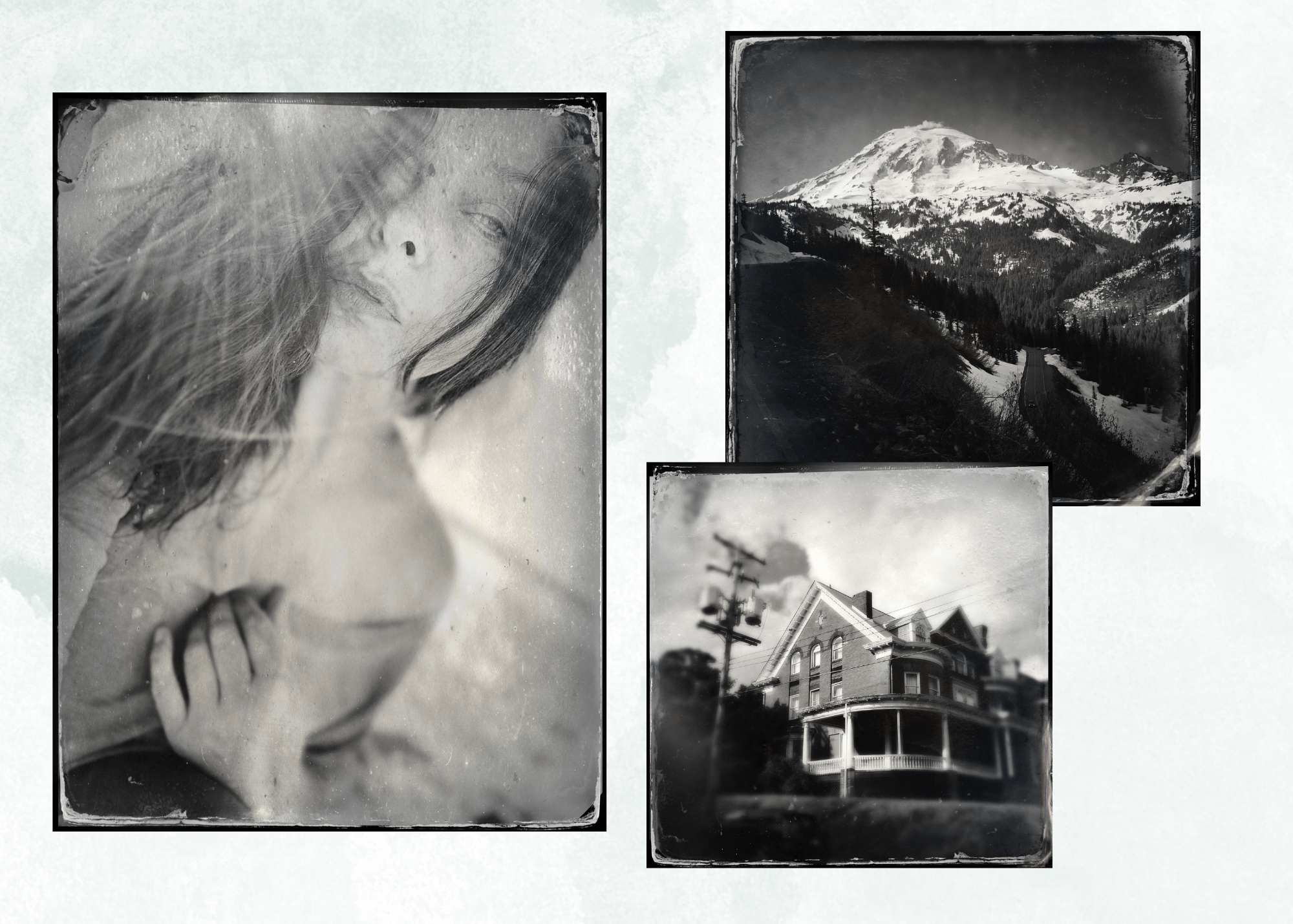All things antique and vintage resurface at some point, and the same goes for the photography world.
Welcome, to the new fad, tintype photography. This style of photography dates back to the late 1890s. Tintype photography gets its name from being created on iron plates (interestingly enough, it involves no tin). And, like all things vintage, this style is making a strong comeback amongst many photographers!
Related article: How Photography Was Invented
What Is Tintype Photography?
Tintype has also been called ferrotype or melainotype style. A quick explanation, tintype constructs a photo onto iron or a thin sheet of metal with a dark enamel coating and chemicals. Once these plates are exposed to light and processed, they result in an underexposed negative photograph. Then, a negative image will appear. After the negative image appears, the chemicals on the plate will draw out a positive image as the final result. And voila! You have a tintype photograph!
Tintype constructs a photo onto iron or a thin sheet of metal with a dark enamel coating and chemicals.
The best part about tintype is that it lasts a lifetime - there's no shelf life on these photographs or the possibility of deterioration. One look at them can also become quite captivating. Tintype photos have a gorgeous silver hue that digital images lack. And, when many people use vintage items to style their homes, having a tintype portrait on your wall will undoubtedly draw your guest's eye!
You would never imagine a photography style created back in 1890 would produce grain-free images. Contemporary photography has granted us the privilege of immediately seeing our photo. Gone are the days of impatience and the need to learn how your photo turned out. There are no wait times for exposure and developing methods. And the tintype was one of those styles that broke the mold. Tintype helped eliminate the drawn-out time it took to see your photograph.
Modern photographers, like our customer Myron Hensel, are now incorporating tintype photography to showcase a unique look. Tintype photography differentiates itself from traditional black-and-white photos because it doesn't recognize the entire color spectrum. For example, the blue color needs to be picked up.
A little less than a decade ago, a photographer name Victoria Will created an internet sensation with her celebrity tintype portraits. She captured celebrities like Kristen Stewart, Jesse Eisenberg, Anna Kendrick, Bill Hader, Jason Schwartzman, and more. This drew an uproar of interest - people were then seeking ways to recreate the tintype effect. Several companies out there will even convert your digital photos into tintype.
However, to be authentic, you should learn more about the actual tintype process and how it works.
The History of Tintype Photography
Once upon a time, in 1853, a man named Adolphe-Alexandre Martin was over the long wait times and the problematic processing that the daguerreotype of photography had. So, he decided, screw it, I'm going to make some changes and figure out a way to create an easier way to take pictures. And that he did. He devised a method for photographers to take photos and give their clients an image within 15 minutes. This style became increasingly popular, especially at events like fairs. It even became a great way for photographers to capture moments during the war for soldiers to send home to family or loved ones.
Related article: How Photography Was Invented
The Process of Tintype Photography
To create tintype photographs, you need to use the wet collodion process. This process is a thick cellulose nitrate solution, usually in alcohol or ether. The damp collodion is added to the iron plate for a tintype and covered in silver nitrate. The plate is inserted into a special camera and moved to a dark room. Now it's exposure time! Once the plate is exposed, it is then immediately processed. The plate will still need to be wet! An underexposed negative image that is coated with enamel or a dark lacquer will appear. After this, it can be processed.
The other way to process tintype photographs is by using the dry method. The dry method uses a gelatin emulsion instead of the typical collodion. Since this method requires the plates to be dry, preparation must be done well in advance. Both of these methods will give the same results.
How to Get Started in Tintype Photography?
Since tintype has come back in trend, plenty of resources are out there to help you achieve the look you want. One of the big brands in the U.S. is UV Photographics. They sell all the supplies you would need to kick-start your new tintype photography adventure.
Related article: How Photography Was Invented
Related article: Everything Looks Better in Black & White – Tips for Better B&W Photography
Related article: Create Moody Portraits with LED Lights
Related article: Photography Smoke Bombs Tips












